Wet vs. Dry Cat Food: Let’s Find Out The Pros and Cons

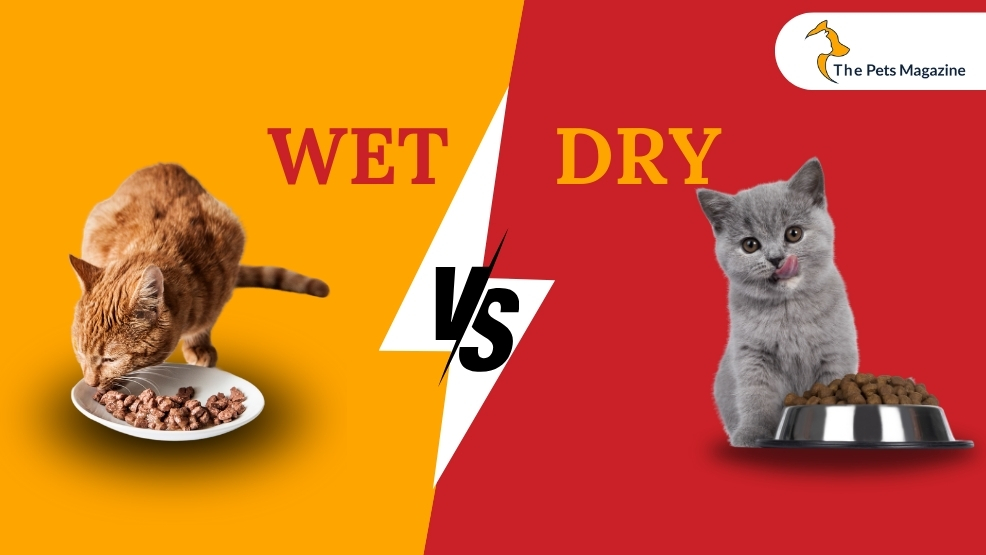
Wet vs Dry Cat food: Which is better? This is an age-old debate among cat parents and one with no ending in sight. Both options have advantages and drawbacks, but the important question is which one is right for you.
In this article, we will go through the pros and cons of each type of cat food to help you make an informed decision about your cat’s nutritional needs and overall well-being. So, let’s dive in.
Understanding the Difference Between Wet Vs. Dry Cat Food
Before we dive into the pros and cons, let’s understand the key differences between wet vs. dry cat food.
What is Wet Cat Food?
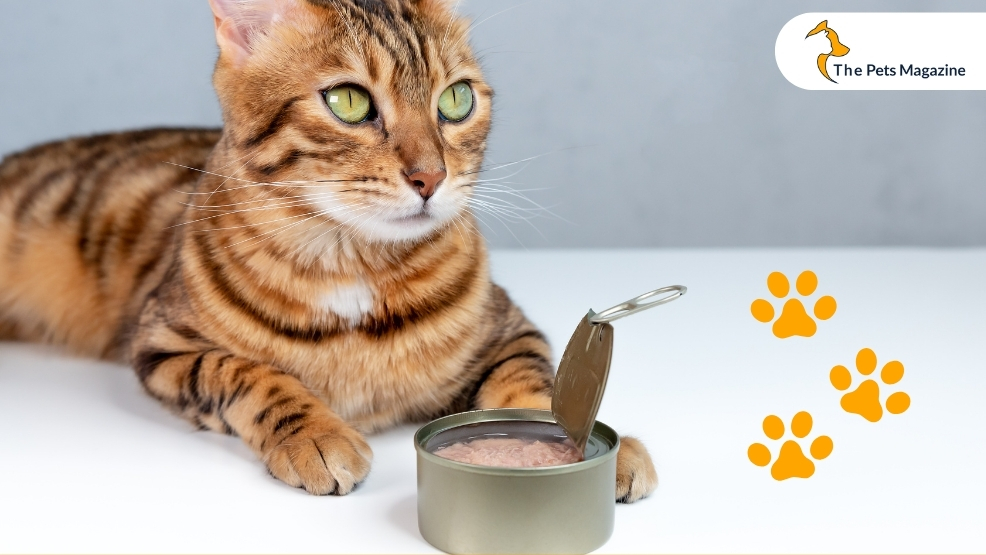
Wet cat food, also known as canned or pouched food, has a high moisture content, ranging from 65% to 82%. This moisture-rich composition closely resembles a cat’s natural prey, which consists primarily of water and protein. Wet cat food also contains 2-10% fat.
The texture can vary widely, from smooth pâté to chunks of meat in gravy. It is also available in various flavors and formulations. As a result, it caters to a variety of feline feeding preferences.
Moreover, it also has a rich, strong flavor compared to dry food. This makes it more appealing to cats, including those with a picky appetite.
Pros and Cons of Wet Cat Food
Now that you know what wet cat food is, let’s explore its pros and cons:
Pros:
High Moisture Content: Cats have a low thirst drive and can easily dehydrate. Wet food provides a significant source of moisture, which can help maintain proper hydration levels and support overall health.
Palatability: Many cats find wet food’s strong aroma and flavors more appealing, making it easier to entice picky eaters or cats with diminished appetites.
Protein-Rich: Wet food typically contains higher levels of animal-based proteins, essential for a cat’s carnivorous diet and supporting muscle development.
Cons:
Shorter Shelf Life: Once opened, wet food has a shorter shelf life compared to dry food, typically lasting only a few days in the refrigerator.
Odor and Mess: Wet food can create unpleasant odors, and its soft texture may lead to messier eating areas.
Cost: Generally, wet food tends to be more expensive than dry food when compared by weight.
What is Dry Cat Food?
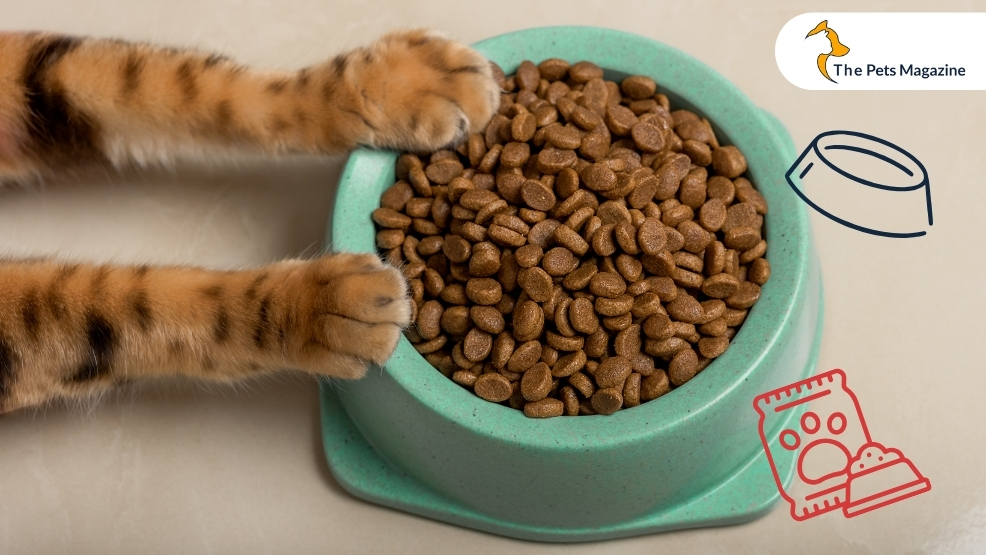
On the other hand, dry cat food, commonly referred to as kibble, has a significantly lower moisture content, typically ranging from 6% to 10%. As a result, dry food, which typically comes packaged in bags or containers, can be stored for longer. It is generally formulated to provide a complete and balanced diet, containing essential nutrients like protein, fats, carbohydrates, vitamins, and minerals.
Its dry, crunchy texture helps to clean teeth and reduce tartar buildup, promoting oral health. The texture is achieved through a process called extrusion. Under this process, high heat and pressure are applied to dry and wet ingredients, including meat, grains, vegetables, essential vitamins, and minerals in specific amounts.
Pros and Cons of Dry Cat Food
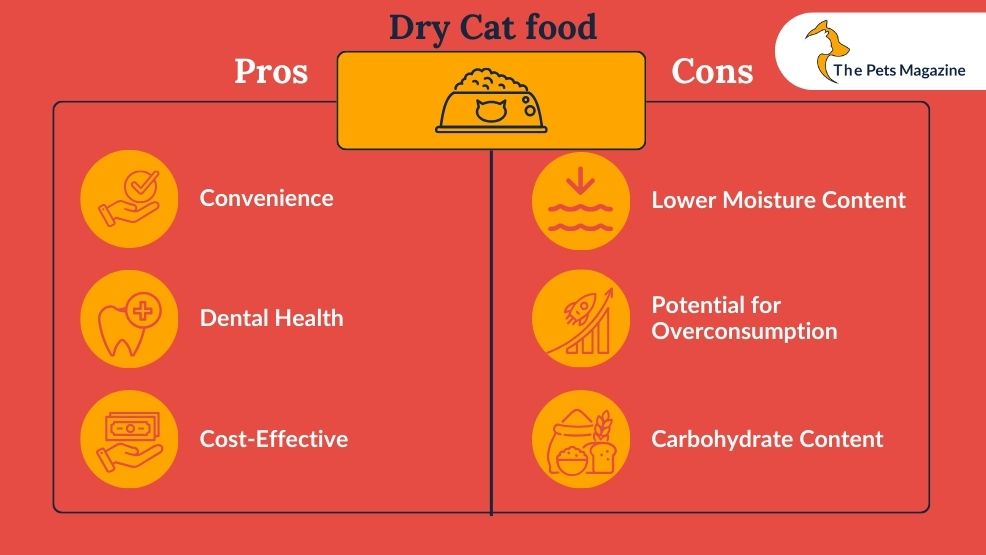
Dry cat food also has its own set of advantages and disadvantages to consider. These are as follows:
Pros:
Convenience: Dry food is easy to store and can be left outside for a long time without the fear of spoiling. This makes it a convenient option for busy pet owners.
Dental Health: The crunchy texture of dry food can help remove plaque and tartar buildup, promoting better dental hygiene.
Cost-Effective: Dry food is typically more affordable than wet food when compared by weight, making it a budget-friendly option for some households.
Cons:
Lower Moisture Content: Dry food has a significantly lower moisture content, possibly contributing to dehydration if your cat doesn’t drink enough water.
Potential for Overconsumption: Some cats may overeat dry food due to its palatability and crunchy texture, leading to weight gain and obesity.
Carbohydrate Content: Dry food often contains higher carbohydrate levels than wet food, which may not align with a cat’s natural carnivorous diet.
Factors to Consider When Choosing Between Wet and Dry Cat Food
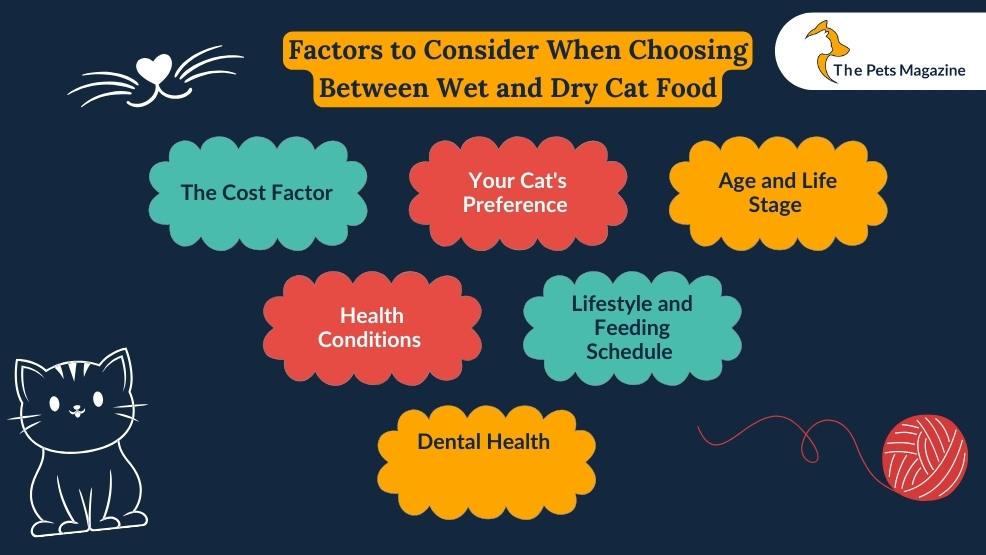
When deciding between wet and dry cat food, consider the following factors:
Nutritional Considerations for Wet and Dry Cat Food
This is one of the most important factors that you need to consider. Both wet and dry cat foods can provide complete and balanced nutrition when formulated correctly. We have explained what makes nutritional cat food to know what you need to look for while buying food for your feline friend.
- Protein Source: Look for high-quality animal-based proteins as the primary ingredient, such as chicken, turkey, or fish.
- Moisture Content: Wet food is naturally higher in moisture, which can benefit cats prone to dehydration or those with urinary tract issues.
- Carbohydrate Content: Dry food tends to have a higher carbohydrate content, which may not be ideal for cats with diabetes or weight management concerns.
- Nutrient Density: Wet food is generally more nutrient-dense than dry food, providing higher levels of certain vitamins and minerals per calorie.
The Cost Factor
Regarding cost, dry cat food is generally more affordable than wet food when compared by weight. However, it’s essential to consider the overall nutritional value and your cat’s specific needs rather than solely focusing on the price tag.
While wet food may be more expensive initially, it can provide better hydration and higher nutrient density, potentially reducing the need for additional supplements or treatments in the long run. On the other hand, dry food may be more cost-effective for larger cats or multi-cat households, especially if you opt for larger bag sizes.
To strike a balance between cost and nutrition, consider incorporating both wet and dry food into your cat’s diet or choosing high-quality, nutrient-dense options within your budget.
Your Cat’s Preference
Some cats strongly prefer the texture and flavor of wet food, so it’s essential to observe your cat’s eating habits and adjust accordingly. You can also consider homemade cat food, if your cat is not interested in wet or dry food.
Age and Life Stage
Kittens and senior cats may benefit more from the higher moisture content and nutrient density of wet food, while adult cats may thrive on a combination of both.
Health Conditions
Cats with specific health issues, such as urinary tract problems, dental issues, or diabetes, may require a particular type of food to manage their condition effectively.
Lifestyle and Feeding Schedule
If you’re away from home for extended periods, dry food may be more convenient, while wet food may be better suited for households with more flexible schedules.
Dental Health
If dental health is a concern, consider incorporating dry food into your cat’s diet to help remove plaque and tartar buildup.
Transitioning Your Cat from One Type of Food to Another
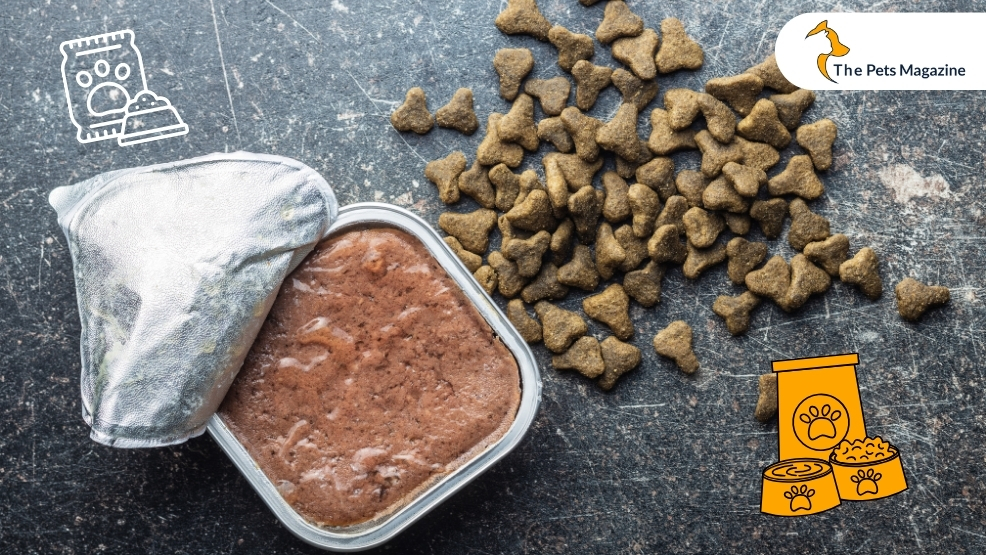
If you decide to switch your cat from one type of food to another, it’s essential to do so gradually to avoid digestive upset or food aversion.
Here’s a step-by-step guide to help you make the transition for your cat more smoothly:
Introduce the New Food Slowly
Initially, add only a small amount of the new cat food into your cat’s daily meal. Over time add a larger amount of new food over 7-10 days.
Monitor Your Cat’s Response
During the transition period Observe your cat’s appetite, stool quality, and overall well-being. If you notice any adverse reactions or if your cat is not eating much but acting normal, slow down the process or consult your veterinarian.
Be Patient
Some cats may be more resistant to change than others. If your cat is reluctant to accept the new food, try different flavors or textures or consult your veterinarian for advice. Since cats can have chicken broth, you can add some to your cat’s meals to entice them to eat the new type of food.
Tips for Feeding Your Cat a Balanced Diet
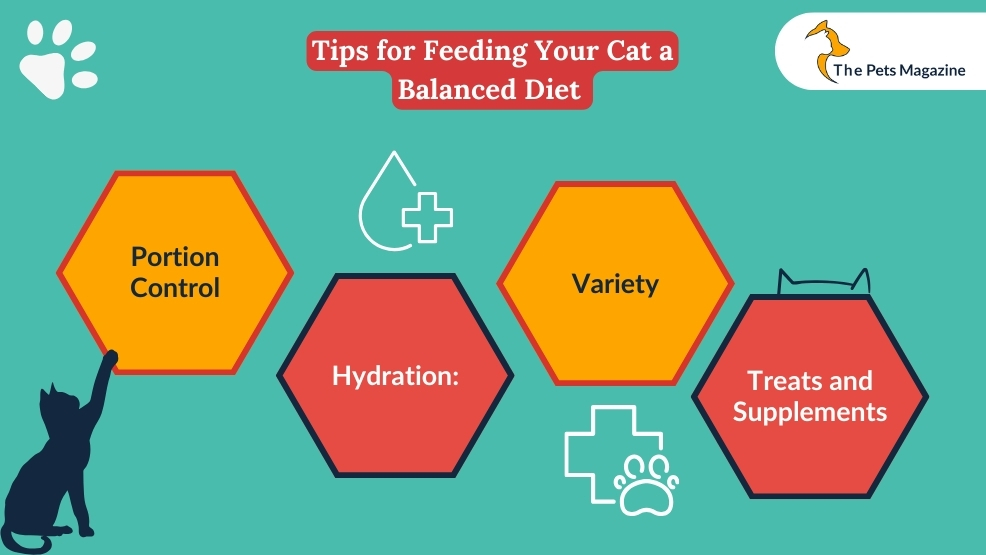
Irrespective of what kind of food you are feeding your cat, you need to ensure your cat’s meals are balanced and nutritious. Here are some tips on how you can do it.
Portion Control: Follow the recommended feeding guidelines on the food labels, adjusting the portions based on your cat’s age, activity level, and body condition.
Hydration: Always provide fresh, clean water, especially if your cat primarily eats dry food.
Variety: Rotate between different protein sources and flavors to prevent dietary boredom and ensure a well-rounded nutrient intake.
Treats and Supplements: Limit treats to no more than 10% of your cat’s daily caloric intake, and consult with your veterinarian before introducing any supplements.
Wet vs. Dry Cat Food: Which One is Better for Your Cat’s Health?
As you can see, the answer to this question is not a one-size-fits-all solution. The decision to opt for wet vs dry cat food depends on your cat’s unique needs, feeding preferences, and overall health condition.
If you’re still unsure about the best feeding option for your cat, don’t hesitate to consult with a trusted veterinarian or a certified pet nutritionist. For instance, for cats with specific health concerns, such as kidney disease, urinary tract issues, or dental problems, your veterinarian may recommend one type of food over the other.
Additionally, they will also consider factors like your cat’s age, activity level, and weight to provide personalized guidance and recommendations for a balanced and nutritious diet for your cat.





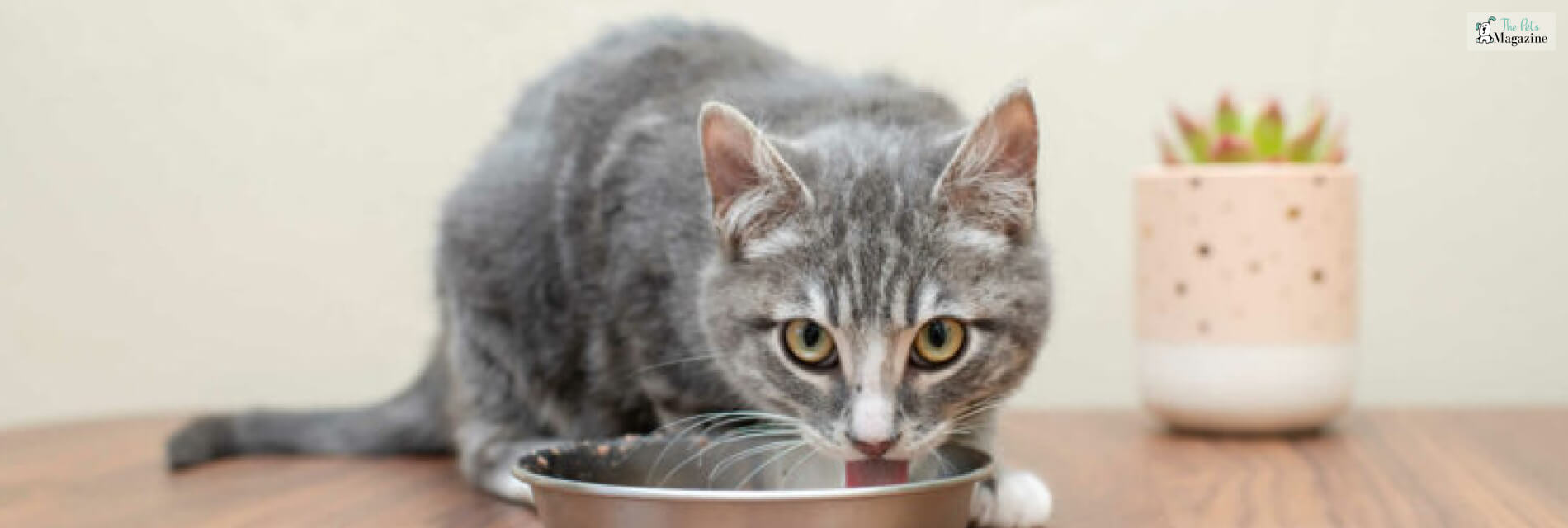
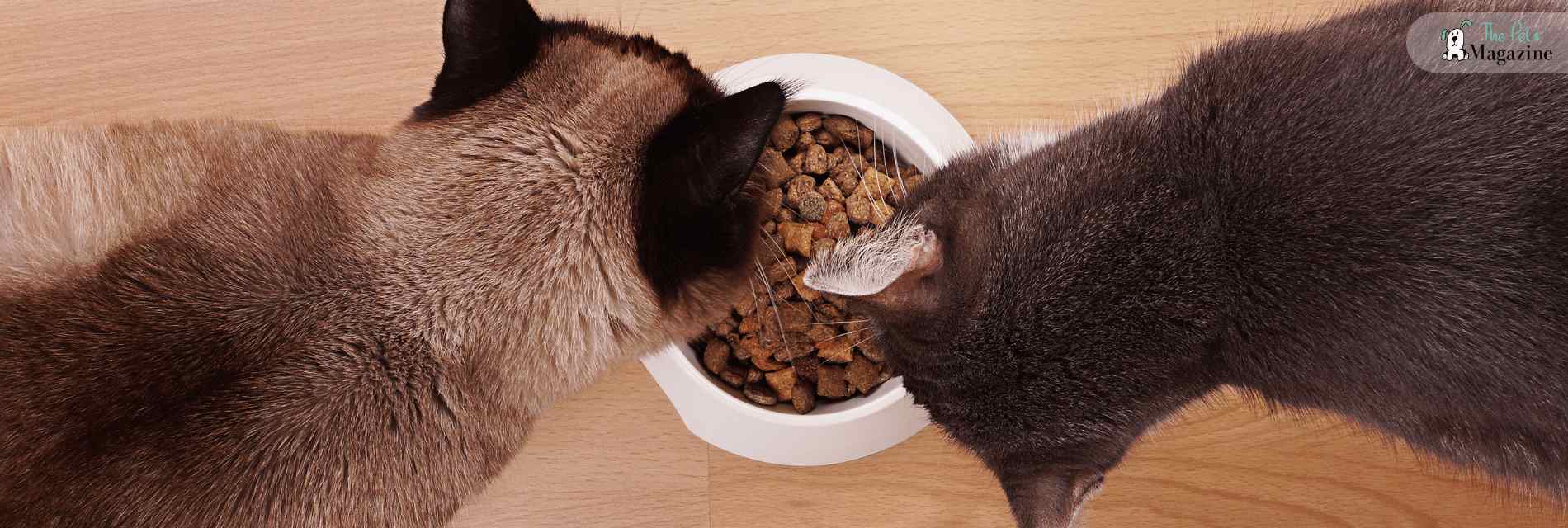
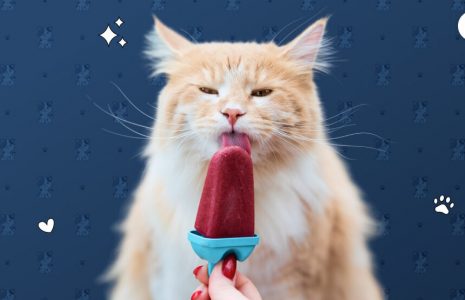
Leave A Comment